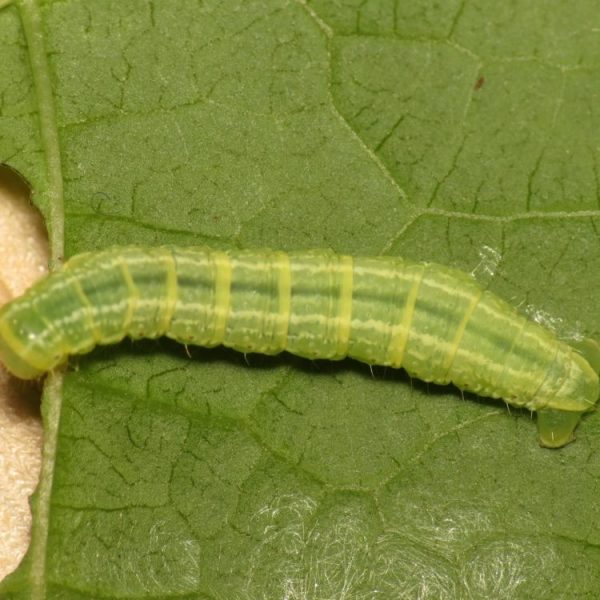It’s time for battle!
Winter Moth and Gypsy Moth are invasive species that will decimate foliage, and in recent years their number and destructiveness have been on the rise. Apple, ash, basswood, birch, cherry, crabapple, elm, maple, and oak are particularly susceptible to Winter Moth & Gypsy Moth caterpillars; fortunately most shrubs (with the exception of blueberries) are mostly exempt from destruction. However, if there’s a many of them and they are hungry, they will eat just about anything!
Early Spring is prime time for caterpillars, so you should be prepared.
Proactive treatment is your best control. Throughout the Winter & early Spring, go hunting and check around your property for eggs; liberally apply Bonide’s All Seasons Horticultural Oil to inhibit hatching and kill emerging larvae. Winter Moths lay their eggs in protected crevices, such as tree bark & cracks in wood & siding. Gypsy Moth egg masses look like beige or white cottony tufts and are often tucked into protected nooks under lichen and debris.
In early April, around the time that buds begin to swell, the Winter Moth eggs will begin to hatch into inchworm larvae. The tiny larvae spin threads of silk and drift up into the tree canopies – this is known as “ballooning”. They’ve also been known to crawl across the ground towards the shadow-line of trees and shrubs, so a few well-placed sticky traps will help on that front.
Once the young Winter Moth caterpillars are up in the canopy they will burrow into tree buds and devour them from the inside out, and horticultural oil will be of no help. Apply Bonide Thuricide to emerging leaves (Bt, aka Bacillus thuringiensis kurtstaki) to active feeding areas; this bacteria-based product essentially causes a disease epidemic and kills them at the source once it is ingested.
More mature Winter Moth larvae are not as vulnerable to Bt, so you will need to switch tactics and use a spinosad based product, such as Captain Jack’s Dead Bug Brew. With any product, always be very careful of spraying in areas where butterflies & beneficial moths may be active – evening is an excellent time to apply these pesticides.
In May things become more complicated, as the Gypsy Moth caterpillars begin to emerge. This is the most active feeding time. Keep spraying Captain Jack’s, or switch things up with a pyrethrin-based contact insecticide like Bonide Eight, which works well on Gypsy Moth in particular. Water damaged trees once a week so that they can recover.
June: The feeding frenzy should be mostly over, and the caterpillars will retreat into the soil to pupate and become adult moths.
July: Take a nap in your hammock and congratulate yourself on your victory! Unfortunately, your yard may be a little less shady than before, but continue watering any damaged trees and shrubs- this extra care and attention will help them recover.








